Edge Cluster Orchestrator Troubleshooting#
Prerequisite Knowledge#
Note
Before commencing troubleshooting, Intel recommends being familiar with the following documents:
Technology Stack for the technology stack used
Architecture Overview for the architecture within Edge Cluster Orchestrator
Deployment referencing the deployment of the Edge Cluster
These will aid greatly in providing a mental model of the cluster creation process.
This guide provides troubleshooting steps for common issues encountered trying to set up a cluster within Edge Orchestrator using specific kubectl commands to help troubleshoot and navigate through the different logs.
Typically it will take a few minutes before the Cluster is successfully deployed as shown below:
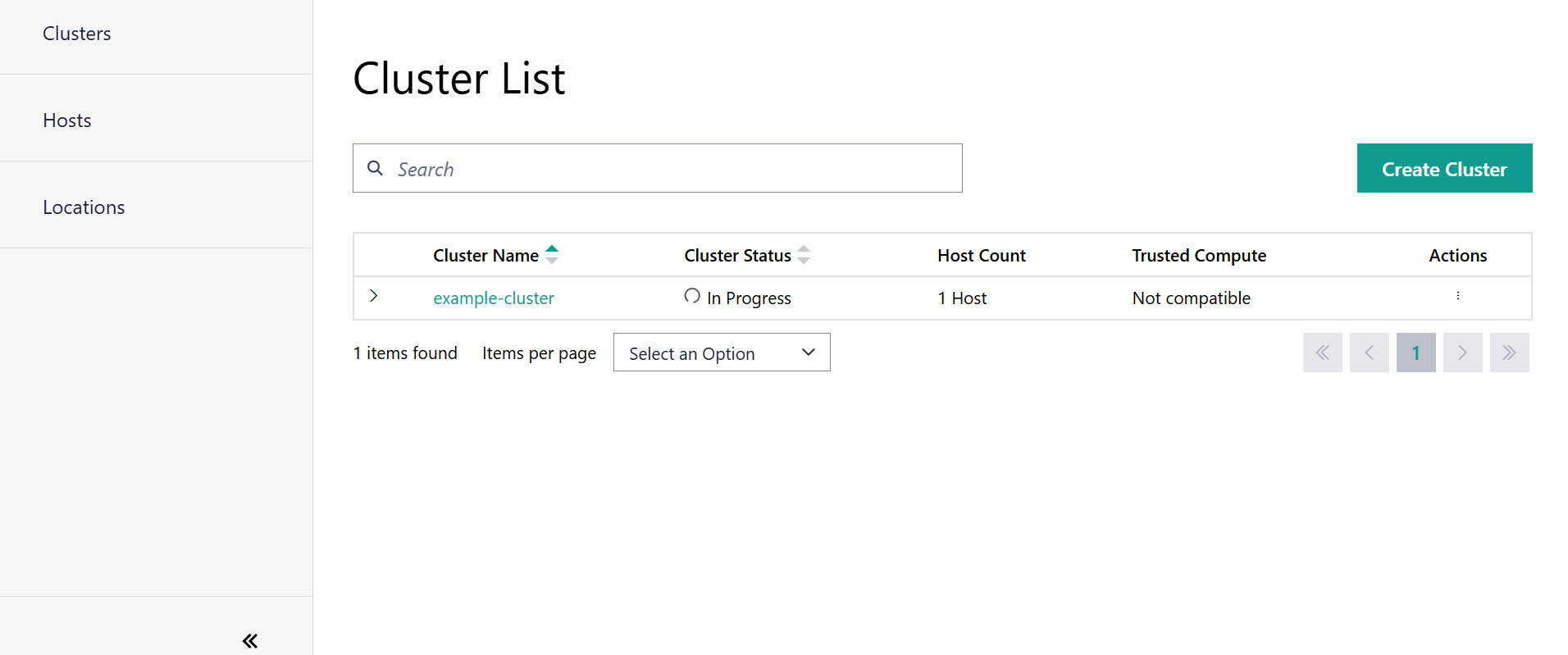
However, if the cluster is stuck in the creation phase for a period longer than 10 minutes, then these are the recommended debugging commands to aid in troubleshooting the various reasons as to why the host is stuck in creation mode.
Edge Orchestrator#
Note
This guide is intended for experienced SRE / DevOps engineers who have been granted permissions/roles to access the console and further intervention is needed to troubleshoot the issue after using logs gather from observability. See: Capturing Logs
The following commands are executed against an Edge Orchestrator’s
Kubernetes* Cluster. To troubleshoot access to the KUBECONFIG is
required. Similar logs information can be obtained from
observability-admin UI. See:
Edge Node Host Performance Dashboard.
kubectl logs -n capi-operator-system -l app=cluster-api-operator
context: issues with the overall management of CAPI components. Things to check for would any misconfigurations or missing resources.
kubectl logs -n capr-system -l cluster.x-k8s.io/provider=bootstrap-rke2
context: issues during the bootstrap process of edge clusters, such as clusters failing to initialize. Things to check for would be any misconfigurations, for errors during the bootstrap process of edge clusters and or network issues.
kubectl logs -n orch-cluster -l app=cluster-manager-cm
context: issues related to API calls failing or unexpected behaviour in cluster management.
kubectl logs -n orch-cluster -l app=cluster-manager-controller
context: issues relating to CAPI template components required for further cluster creation - ControlPlaneTemplate, MachineTemplate, ClusterTemplate and ClusterClass.
kubectl logs -n orch-cluster -l app=southbound-api
Edge Node Logs#
Prerequisite Knowledge to Access the Edge Node Logs#
Note
To access the logs on the Edge Node, you will need to have access to the logs via observability dashboard. See: Edge Node Host Performance Dashboard
To access the logs related to both Cluster Agent and RKE Server, you have to select the Edge Node Agent Log search as below:
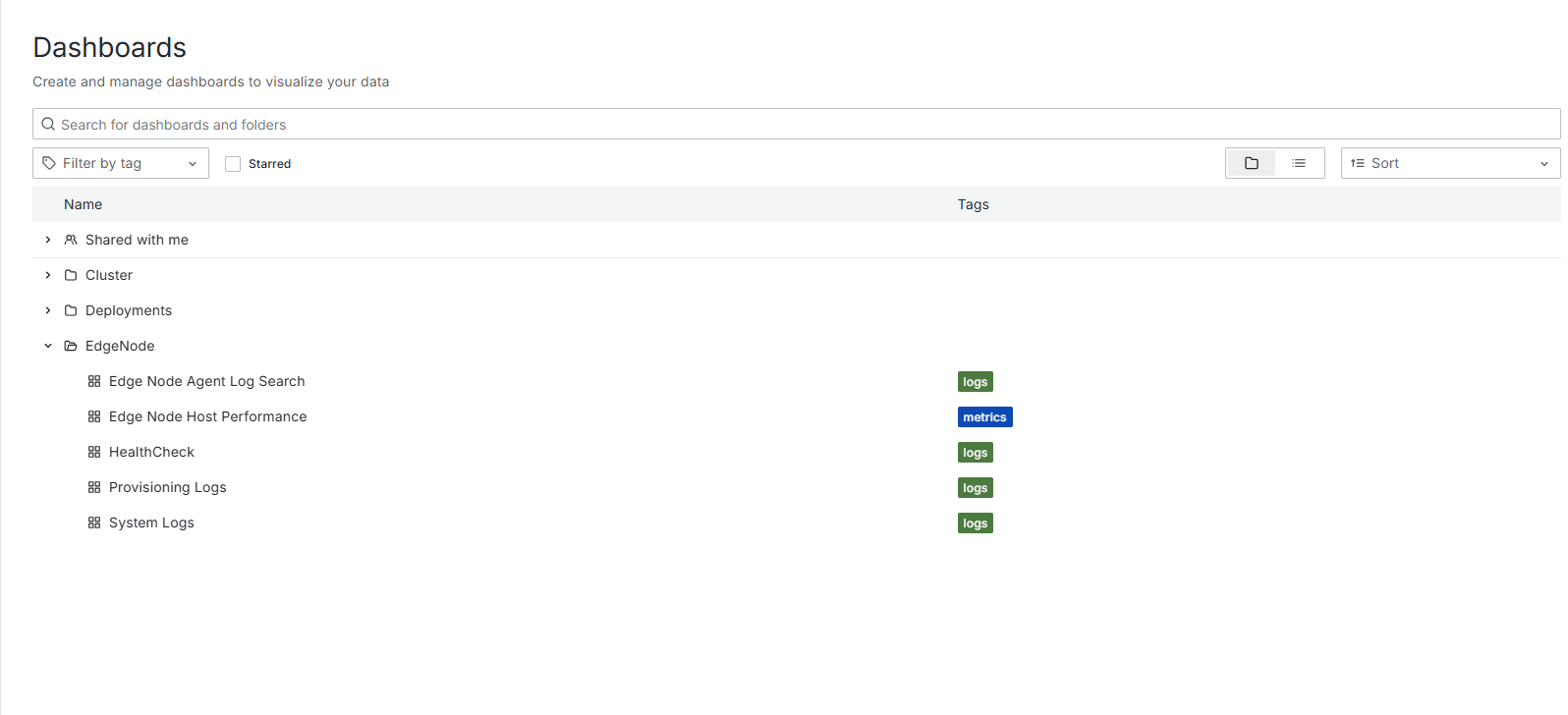
For the particular logs you are looking for, you can use the search with the filter as shown below for RKE Server:

Additionally Issues related to the connect-agent and cluster agent on the Edge Node not responding can be diagnosed by accessing the logs through the dashboard:
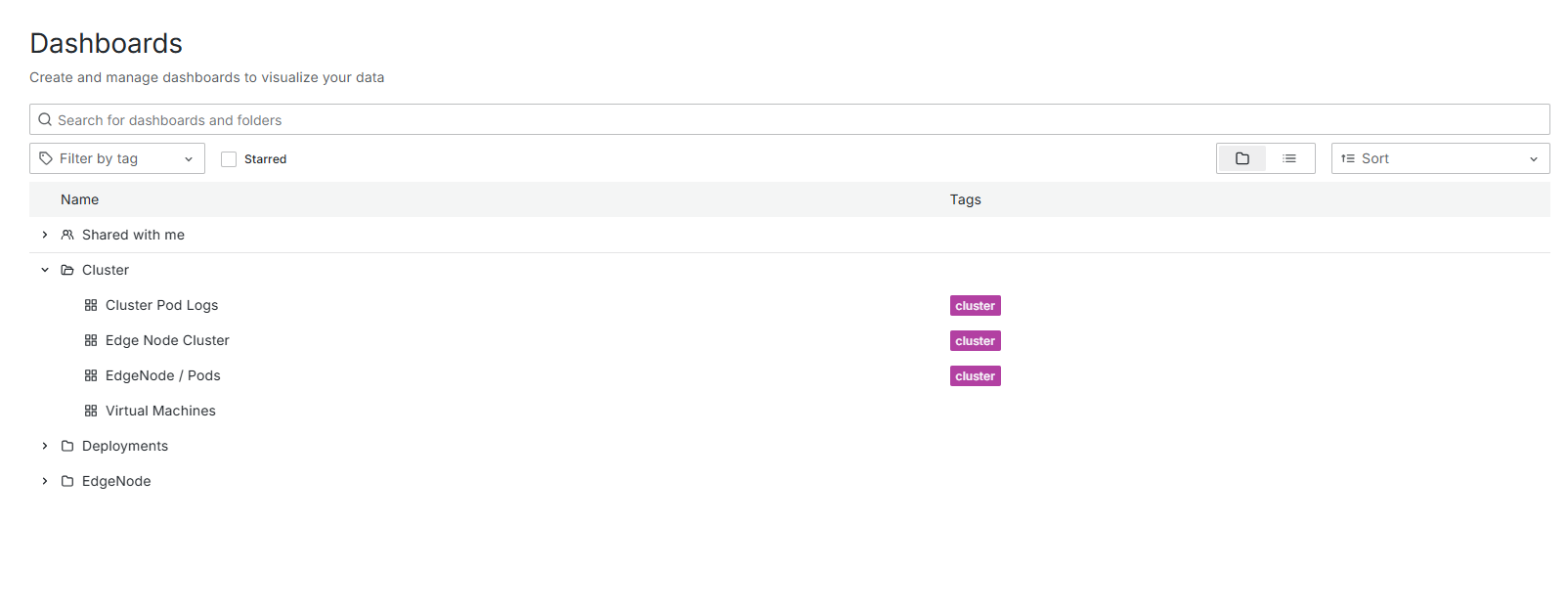
and through searching for the component name in the search filter as displayed below:

For more information related to logs. See: Edge Node Host Performance Dashboard.
context: issues with rke2-server misconfiguration
or Kubernetes cluster installation
(check agent logs for more info as shown in the example for RKE).
context: issues with communication to Edge Node Cluster Agent, such as network failure or issues specific to the agent (check agent logs for more info as shown above).
See for more information: Edge Node Host Performance Dashboard.
Troubleshooting Edge Node Clusters Extensions Deployment#
Edge Node#
Diagnosing extension issues typically requires kubectl access to the cluster. You can do this by downloading the cluster kubeconfig from the UI. You can use this guideline Organize Cluster Access with a Kubeconfig File to download the kubeconfig of a target edge cluster.
Note
If the connect-agent is not deployed and running - the user will not
have access to Edge Cluster and access to kubectl to use the kubectl
commands with the kubeconfig will not execute
The kubeconfig file can then be used to interact with the workload cluster from the Edge Orchestrator environment. For example, to list all pods in all namespace in the Edge Node workload cluster (without extensions)
kubectl --kubeconfig=kubeconfig.yaml get pods -A
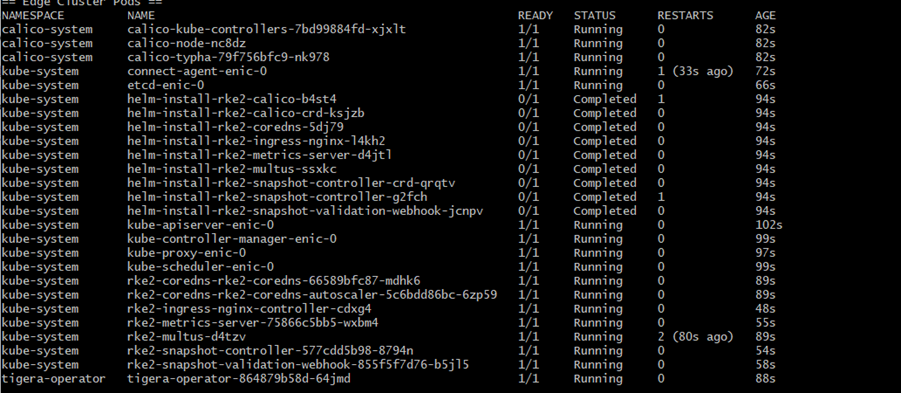
This kubeconfig file will have a short-lived token with maximum of 60 minutes from the web-ui login access. So, you have to login and download a new kubeconfig for the cluster when it expires.
Example of the logs:

When the kubeconfig file is downloaded, since it has the same name, you may be careful to use the most recent version to avoid the expired token issue.
In the deployments tab you will see which apps are failing:
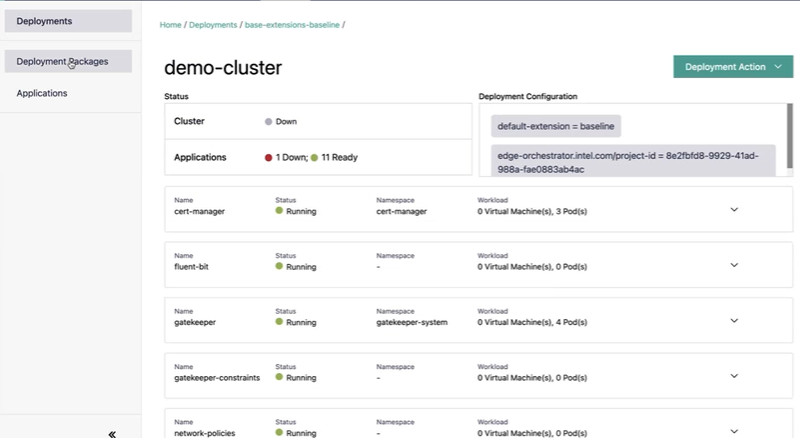

If the number of total apps reported is lower than what you expected, you will need to check the orchestrator cluster for a few things:
App Deployment Manager logs
cattle-fleet-systemgitjoblogsapp deployment jobs in the namespace allocated to the downstream cluster

For diagnosing issues with an app that is failing you can use the downloaded kubeconfig to access pod logs for the app that is having issues. If the app does not seem to have any pods running you can try using helm:
helm ls -A
helm history -n <chart namespace> <release name>
The above commands can be used to list the installed charts and retrieve some info on ones that failed during install.
Testing Extension Changes#
If you want to test changes that you believe will fix an extension, you will first need a Deployment Packages to apply your changes to.
Extensions are currently stored here: open-edge-platform/cluster-extensions.
Once you have your deployment package, make the necessary changes you want to
test. Then, update the version in the applications.yaml and
deployment-package.yaml files.
Note
The version field in the applications.yaml file is an arbitrary value you
can modify to avoid conflicts with other packages and does not need to match
the chart version.
After making your changes, update the deployment package version in the
deployment-package.yaml file and import it into the UI under the deployment
packages tab.

Once the deployment package is imported, go to your failing deployment and upgrade it:
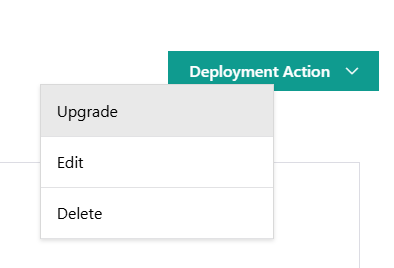
If you want you can also delete and recreate the cluster to try a start to finish installation with a clean state.